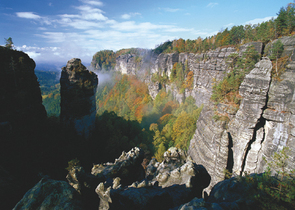The Journal is published by the Nature Conservation Agency of the Czech Republic in cooperation with the Cave Administration of the Czech Republic, the Krkonoše Mts. National Park Administration, the Bohemian Forest Mts. National Park Administration, the Podyjí National Park Administration and the The Bohemian Switzerland National Park Administration. It has been published since 1946.
cs / en
Nature Conservation 5/2009 — 21. 10. 2009 — Research, Surveys and Data Management — Print article in pdf
Dilemma of Priorities? Do We Protect Biological Diversity or Processes?

Wilderness protection has been becoming an important issue also in the European Union Member States, particularly with respect to EU enlargement to the East.
In the article, wilderness is considered as an area with non-intervention management, i.e. involving natural processes, not only from a point of view of historical continuity (pristine areas), but also of current management practices (non-intervention areas) and of future potential (restoration areas). The natural processes protection concept should not be understood as being in contradiction with the biodiversity conservation and management concept, because biodiversity includes not only gene/species/ecosystem diversity, but also processes diversity. Nevertheless, in the particular areas dilemma between species/habitat protection (including those protected within the European Community’s Natura 2000 network) and spontaneous processes protection could be raised. The possible contradiction appears in the areas where on the one hand there is due to their coverage and degree of preservation a high potential for establishing compact areas left to spontaneous development, on the other hand they at the same time display high species/habitat diversity, which nevertheless has been at least partially an output of the previous management. Spontaneous processes may result in the decrease in local species richness: the pattern could not be automatically interpreted as a negative phenomenon from a point of view of nature conservation. Preferring processes protection to species/habitat protection should not cause the significant loss of species/habitat diversity, being in contradiction with the national and European Community’s species/habitat conservation. Therefore, it is necessary to seek for a balance between both the concepts in a wider geographical context. Despite changes in structure and species composition, the conservation status of all succession phases in primary habitats, in which structurally and from a point of view of species composition different phases are a part of naturally cyclic succession, e.g. in mountain Norway spruce forests, should be considered as favourable in the sense of European Community’s Directive 92/43/EEC on the conservation of natural habitats and of wild fauna and flora, more often referred as the Habitats Directive. The wilderness concept should not be considered as a new nature conservation paradigm, being in contradiction with the classical biodiversity conservation, but an approach which has to be integrated, i.a. into the Natura 2000 concept.

